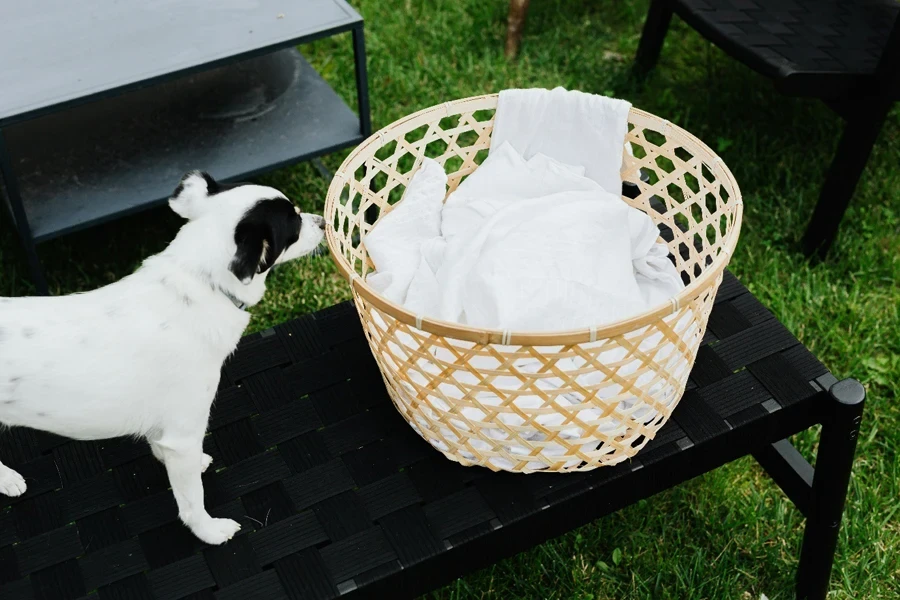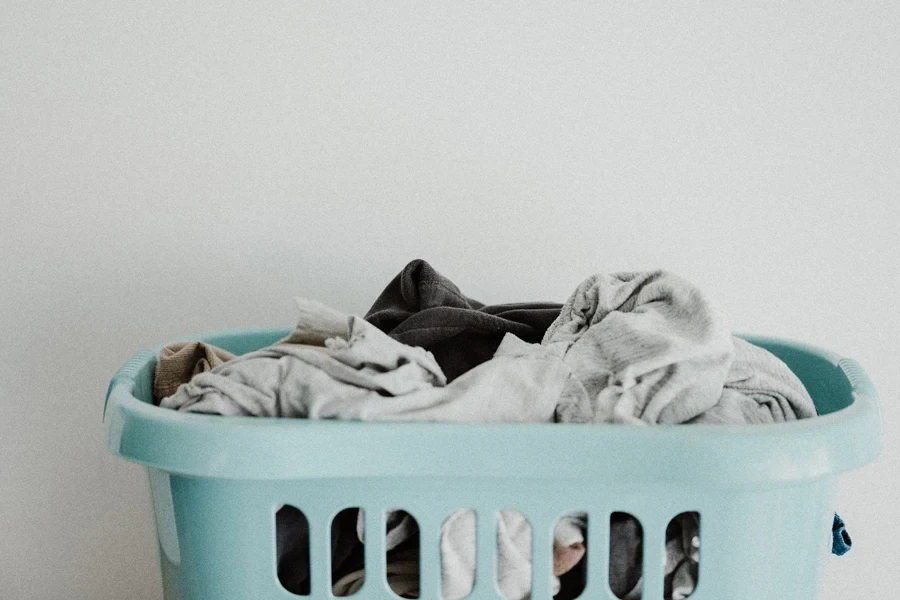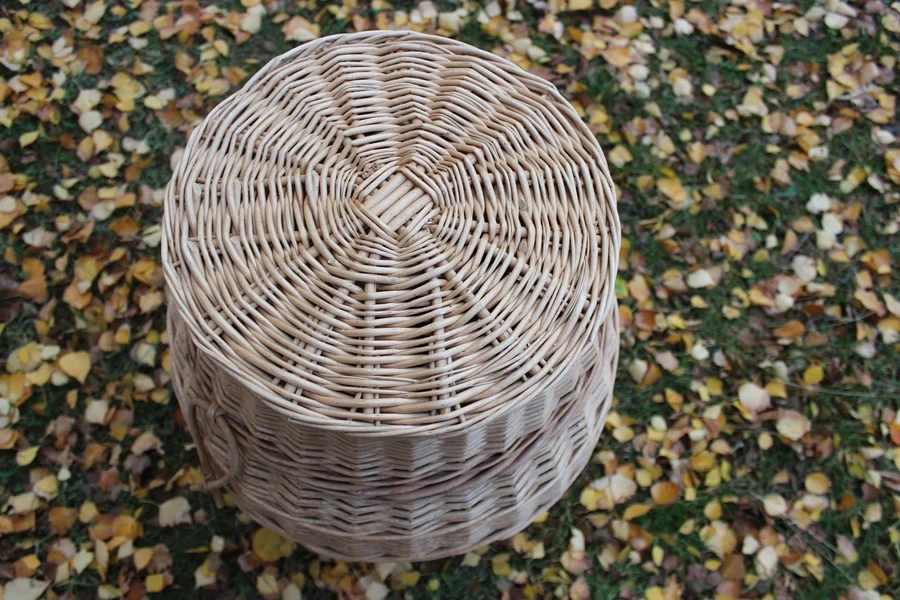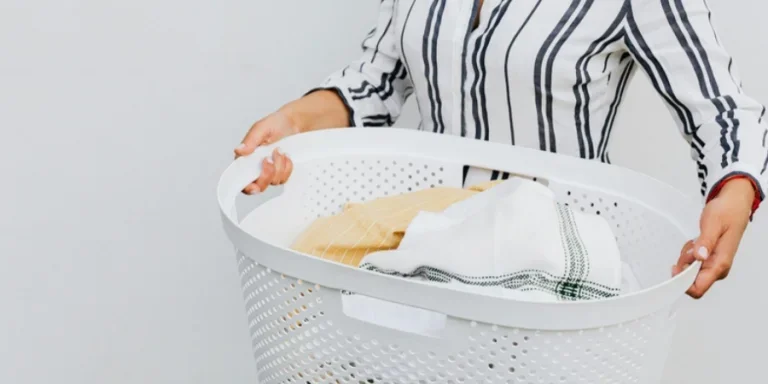Laundry baskets are essential tools for efficient sorting and storage, catering to a diverse range of needs in both commercial and residential spaces. With a growing market offering innovative designs, sustainable materials, and functional features, selecting the right laundry basket is vital for optimizing workflow and enhancing home organization. For professional buyers, understanding current trends and top-performing brands is crucial in meeting customer demand for both practicality and style. This article provides an in-depth look into the laundry basket market, covering everything from material choices to specialized features for various applications. By considering these insights, businesses can make informed, strategic purchases to meet evolving consumer preferences.
Table of Contents
● Market overview of laundry baskets and bins
● Types of laundry baskets and their standout features
● Essential factors for selecting the right laundry basket
● Conclusion
Market overview of laundry baskets and bins

Market growth and scope
The global laundry basket market is on a growth trajectory, anticipated to reach $2.2 billion by 2030 with a compound annual growth rate (CAGR) of 5.6% from 2024 to 2030, driven by rising demand across both residential and commercial segments. According to Valuates, consumer interest is particularly high in multi-functional and eco-friendly designs, a trend that retailers and businesses are leveraging to meet evolving demands. As laundry baskets become essential for home organization and storage, the market continues to expand, especially with new materials and design innovations catering to a wide spectrum of consumer needs.
Leading materials and brands
Laundry baskets today come in various materials such as plastic, bamboo, fabric, and metal, each catering to different consumer preferences for durability, style, and functionality. Plastic remains popular for its lightweight, easy-to-clean nature and affordability, while fabric baskets attract consumers seeking a collapsible, space-saving solution. Eco-friendly materials like bamboo and rattan are also gaining traction, with sustainability-conscious consumers gravitating toward biodegradable and renewable options. Brands like IKEA, Rubbermaid, and Ferm Living lead the market, recognized for their innovation in durable, stylish, and practical laundry basket designs, which help address these shifting demands.
Regional trends
Demand for laundry baskets is robust in Asia-Pacific, North America, and Europe, with each region exhibiting unique preferences. Asia-Pacific leads the way with a high demand for multi-functional and compact baskets suited to urban living spaces. North America has seen rising interest in eco-friendly options like bamboo and rattan, aligning with the region’s strong sustainability movement. In Europe, consumers lean towards durable and high-quality designs, often with aesthetic appeal that complements home decor.
Types of laundry baskets and their standout features

Plastic baskets: Lightweight and durable
Plastic laundry baskets are crafted from polypropylene or high-density polyethylene (HDPE), materials known for their impact resistance and long-lasting durability. These baskets often feature ventilation slots or perforations to improve airflow, reducing moisture buildup and preventing odors in stored laundry. Many plastic baskets come with ergonomically designed handles that support comfortable lifting and carrying, especially useful for larger-capacity models that can hold up to 80 liters or more. For heavy-duty applications, some models are reinforced with thicker walls or ribbed designs to add extra strength without increasing weight.
Fabric baskets: Collapsible and stylish
Fabric laundry baskets are typically constructed from polyester, cotton canvas, or nylon, materials valued for their breathability and flexibility. These baskets often integrate collapsible wire or plastic frames, allowing them to fold flat for convenient storage. Many fabric baskets also feature moisture-wicking linings, which help control humidity and prevent mildew, essential for damp laundry environments. They are designed to handle various laundry loads, with capacities ranging from 40 to 60 liters, and are often equipped with drawstring closures or zippered lids to keep laundry neatly contained and out of sight.
Wicker and rattan baskets: Eco-friendly elegance
Wicker and rattan baskets are manufactured from natural, renewable fibers such as willow, seagrass, and rattan palm, chosen for their lightweight yet resilient properties. These materials are often treated with natural resins or eco-safe coatings to increase durability and make the baskets resistant to water and stains. Their woven construction allows for optimal airflow, reducing the risk of mildew and enhancing the longevity of stored fabrics. Standard sizes range from 50 to 100 liters, and these baskets frequently feature reinforced wooden frames to handle weightier loads without compromising structure.
Bamboo and wood baskets: Sturdy and organic

Bamboo and wood laundry baskets are known for their rigid framework and superior load capacity. Bamboo baskets are commonly reinforced with stainless steel or aluminum rivets at joints to improve structural integrity, enabling them to hold up to 100 liters or more. Many designs include cotton or canvas liners that are machine-washable, adding convenience and maintaining hygiene. Additionally, bamboo is often heat-treated or carbonized to improve its resistance to mold and insects, making these baskets well-suited for humid laundry rooms. Some models feature compartmentalized sections to separate different types of laundry.
Metal and wire baskets: Vintage and industrial chic
Metal and wire laundry baskets are built from galvanized steel, powder-coated iron, or stainless steel, materials that offer high tensile strength and rust resistance. These baskets are commonly equipped with rolling castor wheels, designed for smooth transport over various floor types, including carpet and tile. Wire baskets often include integrated frames with cross-bracing for added stability, allowing them to support weights of up to 30 kilograms. Many models also feature removable cotton or linen liners, which can be machine-washed to maintain freshness, making them ideal for high-volume laundry facilities or robust home use.
Innovative designs: Stackable, wheeled, and compartmentalized baskets
Modern laundry baskets incorporate advanced design features for space efficiency and functional organization. Stackable baskets often include interlocking grooves or latching mechanisms, which ensure stability when stacked vertically, accommodating compact storage needs. Wheeled baskets are fitted with swivel casters that rotate 360 degrees, enhancing maneuverability and making them suitable for transporting heavy loads across larger areas. Compartmentalized baskets frequently have partitioned inner compartments made from washable, odor-resistant fabric or detachable inner bags, allowing users to sort laundry by color, type, or wash requirements, streamlining laundry processes for both personal and commercial use.
Essential factors for selecting the right laundry basket

Laundry volume and household needs
Choosing the appropriate laundry basket size depends heavily on household size and laundry frequency. For larger families, baskets with capacities of 60 to 100 liters or more are often ideal, as they can accommodate high volumes of clothing and linens. Smaller households or those who do laundry more frequently may find baskets ranging from 40 to 60 liters sufficient, especially when space is a priority. Compact options or even multiple smaller baskets can be particularly effective in shared households, allowing for sorting by individual needs or laundry type. Larger baskets or multi-compartment options are recommended for those who prefer organizing laundry by color or fabric type to streamline the washing process.
Material considerations: Durability vs. style
The material of the basket plays a critical role in its durability and suitability for various household needs. Plastic baskets offer a lightweight, moisture-resistant solution and are often favored for frequent handling and heavy loads. However, for buyers seeking a more decorative option, bamboo and wicker baskets bring natural beauty and durability, making them ideal for stylish interiors. Fabric baskets provide flexibility and a softer look, and they are often collapsible, which is beneficial for space-saving. For long-term durability in high-use environments, metal or wire baskets are optimal, as they resist deformation under weight and are commonly treated to prevent rusting. Choosing the material depends on the balance between functionality, visual appeal, and the intended usage frequency.
Handling and portability options
Laundry baskets designed with handling and portability in mind often feature ergonomic grips, side handles, or integrated wheels to facilitate easy transport. For multi-story homes or those with larger laundry areas, baskets with swivel wheels or lockable castors enhance maneuverability, enabling users to move heavier loads without strain. Baskets with removable liners or lightweight materials like plastic and fabric are beneficial for frequent movers, as these can be carried up stairs or through narrow hallways with ease. Additionally, cut-out handles or rubberized grips add comfort and reduce hand strain, especially for users managing bulkier items or transporting laundry over long distances.
Space-saving and storage efficiency
In compact living spaces, space-saving laundry baskets are essential. Collapsible baskets offer the convenience of folding flat when not in use, while stackable designs allow multiple baskets to be stored vertically, maximizing floor space. Wall-mounted or hanging baskets are excellent choices for small apartments, as they can be fixed to doors or walls, keeping floors clear and minimizing clutter. Stackable baskets with built-in latching mechanisms ensure stability, allowing users to save space without sacrificing organization. In cases where frequent storage and retrieval are necessary, baskets with foldable frames or mesh construction provide an efficient, lightweight solution that accommodates fluctuating storage needs.
Eco-friendly and sustainable options
For environmentally conscious buyers, eco-friendly laundry baskets made from renewable materials like bamboo, rattan, or water hyacinth offer a sustainable alternative to plastic. These materials are biodegradable and often harvested responsibly, minimizing the environmental footprint of the product. Additionally, natural materials like bamboo and rattan are known for their strength and aesthetic appeal, aligning with consumer demand for sustainable yet stylish home goods. Baskets crafted from recycled or responsibly sourced materials further appeal to consumers focused on reducing waste and promoting sustainable living.
Conclusion

Selecting the right laundry basket is essential for optimizing both functionality and style in any setting, whether residential or commercial. By carefully considering factors such as material durability, size, handling features, and sustainability, buyers can ensure they invest in products that meet specific needs and align with consumer trends. Thoughtfully chosen baskets enhance efficiency, support organization, and contribute to eco-friendly practices, making them a valuable addition to any laundry routine.




